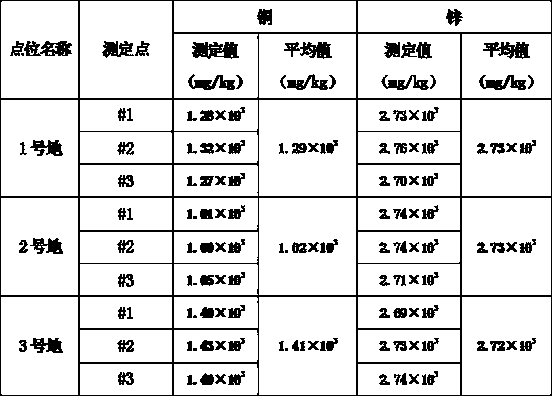Method for combined remediation of heavy metal in soil through biomass charcoal-plant-microorganism
A technology of biochar and joint repair, applied in the restoration of polluted soil, etc., can solve the problems of low removal efficiency of heavy metals, increase soil fertility, etc., and achieve the effect of simple implementation, good application prospects, and low price
- Summary
- Abstract
- Description
- Claims
- Application Information
AI Technical Summary
Problems solved by technology
Method used
Image
Examples
Embodiment 1
[0020] The collected peanut shells are passed through sieving soil and transferred into a downdraft biomass carbonization furnace, where they are pyrolyzed at 600°C under anaerobic conditions for 1.5 hours to make biomass charcoal, and then ground to 80 meshes for use.
[0021] Bacillus subtilis was cultured in a nutrient solution at a ratio of 0.01 g / L, and the nutrient solution ratio used was shown in Table 1, and the mixture was bottled for use.
[0022] Table 1 The ratio of nutrient solution
[0023] Nutrient solution composition
Peptone
NaCl
glucose
water
pH
Ingredient content
3g
10g
5g
10g
1L
7.4-7.6
[0024] Dilute the prepared bacterial suspension with distilled water, with a dilution ratio of 1:3, for use
[0025] Soak the Paspalum notatum seeds in warm water for 24 hours and set aside.
Embodiment 2
[0027] Taking the land where the production workshop of a copper smelting plant in Tieling City is located as the pre-repair area, three plots are selected as test plots, and three points are selected for each plot for determination. The soil test results before treatment are shown in Table 2.
PUM
 Login to View More
Login to View More Abstract
Description
Claims
Application Information
 Login to View More
Login to View More - R&D
- Intellectual Property
- Life Sciences
- Materials
- Tech Scout
- Unparalleled Data Quality
- Higher Quality Content
- 60% Fewer Hallucinations
Browse by: Latest US Patents, China's latest patents, Technical Efficacy Thesaurus, Application Domain, Technology Topic, Popular Technical Reports.
© 2025 PatSnap. All rights reserved.Legal|Privacy policy|Modern Slavery Act Transparency Statement|Sitemap|About US| Contact US: help@patsnap.com



